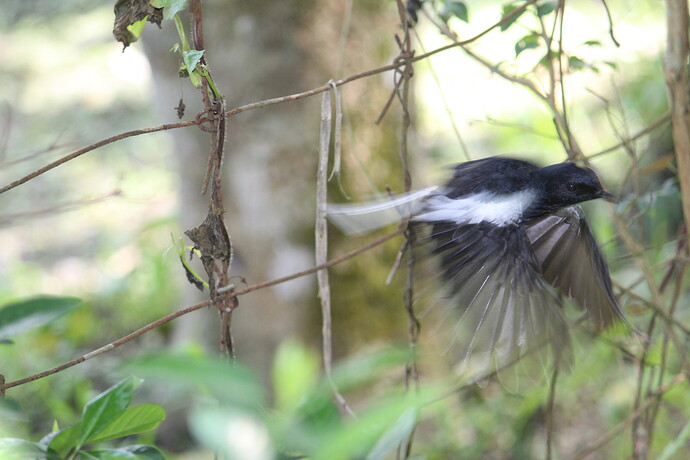It was sunday when I was taking some photographs of butterflies in my campus. Suddenly a white bellied bright black bird came near me and started eating black ants. It was very close to me untill my little son made a noise. I knew only it as Oriental Magpie Robin and as a common bird I have no more interest. But a close glance at the bird I felt sorry to know nothing about it.
Photo: susantatanti
Copsychus saularis , zoologically known belong to Muscicapidae family of order Passeriformes.
Oriental magpie robin is the National bird of Bangladesh. The Size is between 17 cm to 20 cm including the tail. It is a sparrow sized bird. Male has glossy blue-black upper parts, head, throat and upper breast. Long tail is black, with white outer feathers.
Wings are black with two bold, long, white wing bars. Underparts are white. The underparts and the sides of the long tail are white. Females are grey above and grayish white.
The Oriental Magpie Robin is found in open woodland, cultivated areas often close to human habitations. They prefer open areas such as mangroves, gardens, cultivated areas. They are not found in the deep forest. Oriental Magpie-Robin feeds mainly on insects caught on the ground, and also flower nectar. It also consumes earthworms, snails, small lizards and some plant matter.
Photo: susantatanti Dated: 23-6-2019
The Oriental Magpie Robin is also amongst the more familiar birds found about the haunts of Man. They live solitary, in pairs or in family groups, about human habitations. In the non-breeding season it is shy and quiet, skulking about in undergrowth. The Oriental Magpie Robin is a common and tame bird. It is terrestrial, hopping along the ground with cocked tail. The male sings a few melodic notes during courtship. Oriental Magpie-Robin searches for food on the ground, hopping with raised tail and foraging for preys.
The Oriental Magpie Robins have a delightful varied song and are said to be able to imitate the calls of other birds. They are sprightly and lively, often cocking their long tails. They are easy to spot as they are not shy and sing from exposed perches.
Note: As I observed the bird it showed no fear to come near a human being , taking many insects (black ant) from near my feet ( 3-4 feet away) it might feeding its offaprings . As literature said during breeding period it has no shy character.

